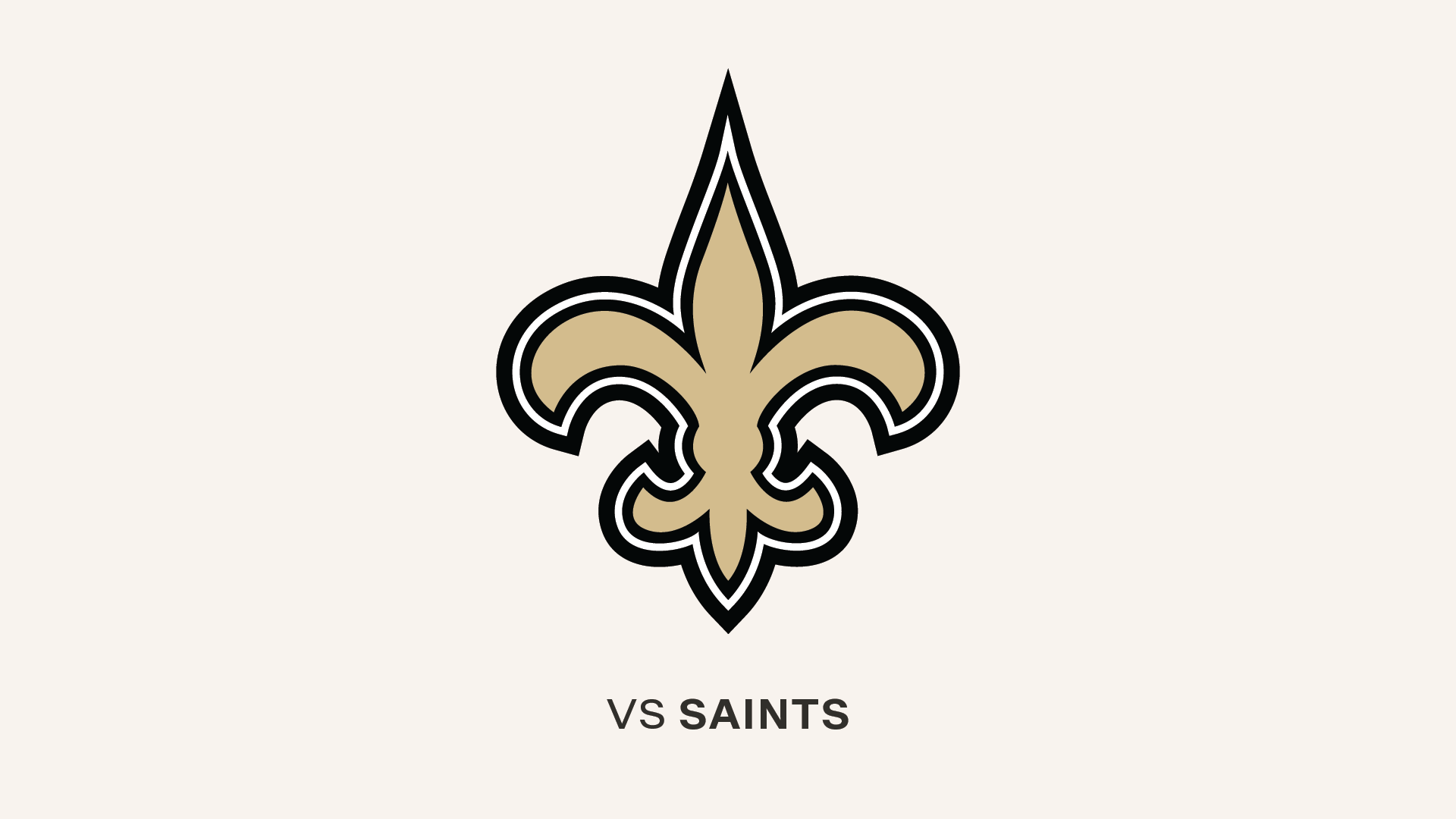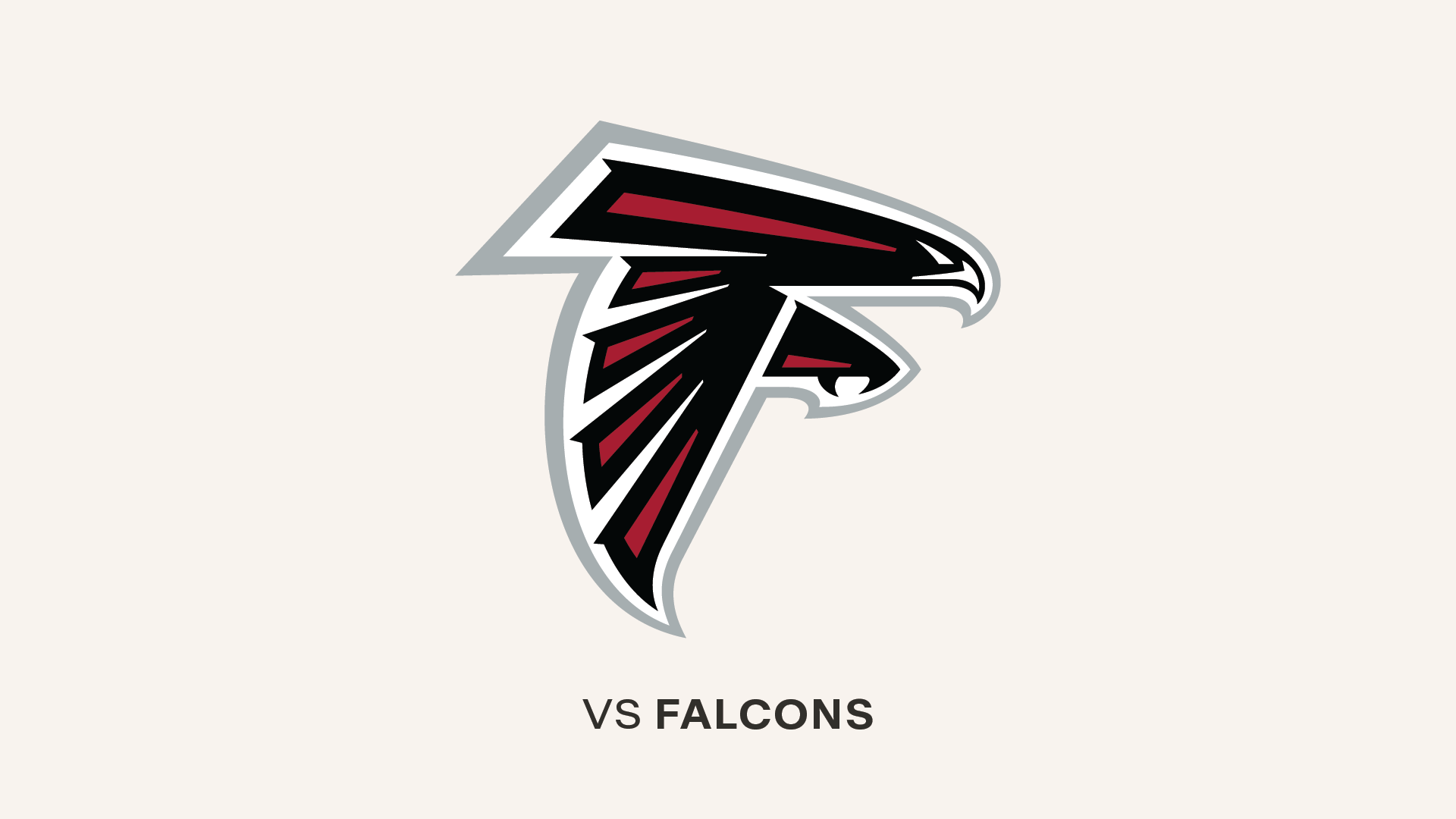In Week 15 of this past season, the Tampa Bay Buccaneers were decided underdogs as they took on the Chicago Bears in Soldier Field. The game followed the expected storyline for most of the first three quarters, as the 11-2 Bears opened up a 24-3 lead and forced Head Coach Jon Gruden to yank rookie starter Bruce Gradkowski.
However, Tampa Bay rallied too a 31-31 tie at the end of regulation behind quarterback Tim Rattay. The Bucs could have at least delayed Chicago's assumption of the NFC's first overall seed with a victory, but the Bears were able to pull out the 34-31 victory in overtime.
Now those same Bears are in the Super Bowl, having taken down Seattle and New Orleans in the NFC playoffs. Chicago is one victory away from the second Super Bowl championship in franchise history, with only the Indianapolis Colts standing in the way.
If the Bears do win Super Bowl XLI, it will mark the first time in 10 years that a team the Buccaneers played in the regular season went on to take the title. In all, the Bucs have played the eventual Super Bowl champs during the corresponding regular season eight times (well, 10 times in eight years, actually, counting two games against Chicago in 1985 and two against Green Bay in 1996).
We have these stats because the Answer Man forced himself to undergo a little bit of self-evaluation this week. You could call it an internal audit. If I'm going to announce my comeback, I want to do it right. So I thought the best way to ensure quality control was to pose my own research-oriented question and try to answer it as thoroughly as possible. Here's what I came up with, in an effort to relate to the most important current topic in the NFL:
Of the 30 Super Bowls that have been played since the Buccaneers joined the league in 1976, how many have included the teams Tampa Bay played during the regular season? What is the Buccaneers' record against eventual Super Bowl champions, and Super Bowl runner-ups?
I found the answers pretty surprising. If you remove that glorious year in which the Buccaneers won the Super Bowl (2002), you have 29 other years in which Tampa Bay could have played the eventual champs. They actually did so in only eight of those 29 years, in part because NFC Central teams only took the title in 1985 (Chicago) and 1996 (Green Bay).
The Answer Man would have enjoyed this particular self-assigned topic a bit more if the results would have come out differently. Alas, Tampa Bay has never knocked off a team that would go on to win the Super Bowl, though they have come extremely close on several occasions. The best example occurred in 1989.
ESPN recently judged the 1989 San Francisco 49ers to be the greatest team in Super Bowl history. That squad went 14-2 in the regular season and rolled through the postseason, culminating in a 55-10 win over the Denver Broncos. They ranked first in offense and fourth in defense in the NFL. Et cetera, et cetera.
Well, they almost took their first loss of the season in Week Two at Tampa Bay. Joe Montana had to drive the 49ers 70 yards in the game's closing minute, bootlegging it in himself on a four-yard touchdown run, to avoid a 16-13 Buccaneer win. A defensive holding call on cornerback Donnie Elder played a critical role in the comeback.
The Bucs have only played the Super Bowl losers in seven of their 30 seasons prior to 2006. Tampa Bay defeated the eventual runner-ups in 1979 (the Los Angeles Rams, though they also lost to the Rams in the NFC Championship Game that year), 1982 (Miami) and 2001 (St. Louis).
On only two occasions, and not since 1985, has the Buccaneers' schedule included both teams that would end up in that year's Super Bowl. In 1982, the Bucs beat Miami, 23-17, but lost to Washington, 21-13, during an abbreviated regular season. The Redskins then beat the Dolphins, 27-17, in Super Bowl XVII. In 1985, the Bucs lost twice to the eventual champion Bears and once to the runner-up Patriots.
Okay, there's your answer…uh, me. Now let's get to your questions.
**
Let's start with the one I punted during my abbreviated comeback announcement last week.
- Brett M. of Hoboken, New Jersey asks:
We all know that probable, questionable and doubtful are supposed to mean 75, 50, and 25 percent chance of playing (respectively) on Sunday...But can you, the Answerer of all things Holy and UnHoly actually tell us how often a player plays when he is listed as questionable or doubtful or even probable? Thank you.
Answer Man: Of course I can. But as happens so often in our discussions, I must first clear up a couple misconceptions before getting to the answer proper.
And please don't take this as an insult, because the misconception I'm about to address is shared by almost everyone, including more than a few individuals working for NFL teams. At least, it was before it was emphasized heavily in front offices this year.
See, here's the thing: Probable, Questionable and Doubtful DO NOT mean 75, 50, and 25 percent chance of playing (respectively). The Answer Man had gone by the same assumption for years, but the actual definitions of those terms are (and I'm using the exact wording distributed by the NFL):
- Out…Definitely will not play * Doubtful…At least 75% chance will not play * Questionable…A 50/50 chance will not play * Probable…Virtual certainty that player will be available for normal dutyOkay, so let's take them one at a time.
Out. That one's obvious.
Doubtful. While that appears to be in line with your definition, in practice it is not. It is very rare for a player to play after being listed as doubtful at the end of the week. If it starts to look as if a "doubtful" player might have a shot at playing, he'll usually get upgraded to questionable by the end of the week.
Questionable. This is the one that drives fantasy football players nuts, and it's also the one on which I won't quibble with your definition. I'm not sure why the league says "75%" for doubtful and "50/50" instead of "50%" for questionable, but whatever. If you don't have additional information, this one really will leave you guessing right up until game time (or 90 minutes prior to kickoff, when inactives are announced).
Probable. That's the one that needed the most clarification this year, though the new wording is a lot closer to reality than the old assumed "25% chance of playing." If the latter were the true definition, you might expect one out of four probable players, on average, to miss the game. In reality, it is as rare for a probable player to miss a game as it is for a doubtful player to play. So why even have that designation? Well, again, it's a starting point for the week. Saying a player is probable at least acknowledges his injury; if he happens to get worse during the week, he can be downgraded to questionable and now you might see him miss the game. Also, if a player is going to be held out of any of the practices due to injury, even if he is expected to play that weekend, his team needs to include him on the injury report somewhere.
The issue of upgrading and downgrading players during the week is also critical to the answering of Brett's question. It doesn't really matter if the player was considered probable on Wednesday; if he's down to doubtful on Friday (the day of the final report unless a team is forced to make a significant change on Saturday) that's the designation that matters. By the end of the week, you should know all of the players who could still go one way or the other: Everybody under the "questionable" heading.
Fortunately, the Answer Man has easy access to all of the Buccaneers' injury reports during the season and to the play-by-plays. That's all we need to crunch the numbers…that and my superhuman brain (stop laughing!).
Here's what I found: There were 117 players listed as questionable on the final injury report for both teams in the Bucs' 16 games of 2006. Of those 117, 72 ended up playing in the game and 45 did not. From those numbers, if you're happy with the sample size, you could say that about 62% of players considered questionable on Friday end up playing on Sunday (or Saturday for Monday…you get the idea).
Of course, that could be skewed one way or the other if the Bucs were one team particularly likely to put either a lot of players or very few players on their questionable list, on average. So I also took one week across the entire NFL (Week 10, chosen at random) and looked at the Friday injury reports for all the games. In the 16 games of that week, including the Bucs' Monday nighter at Carolina, 103 players were considered questionable at the end of the week and 60 of them practiced. That's 58%, which is awfully close to the Buc-game-only number from above.
That's pretty close to the 50-50 it's supposed to mean, too. It would be even closer if one or two games here and there didn't skew it high. For instance, in that Week 10 analysis, Cleveland listed 11 players as questionable and all 11 of them played. The Browns again had 11 players listed questionable when they played the Bucs in Week 16, and nine of those 11 ended up suiting up for the game. That is not in any way a slam on the Browns; teams are free to list as many injured players as they care to, and some obviously choose to err on the side of caution. It is frowned on by the league if a player who is not listed on the injury report ends up not playing due to health reasons.
So, through all of that, I think we arrive at your answer, Brett. Doubtful players almost never play, probable players almost never sit out and questionable players really are close to a 50/50 proposition, with a little lean to the positive side.
**
- Jerome of Crestview, Florida asks:
Can a free kick become an onside kick even when it is punted?
Answer Man: Our onside kick discussion from last week spawned a few side topics, such as this one and the one below. Both are pretty straightforward, fortunately. No infinite goal-line planes to worry about here.
Yes, Jerome, you can attempt an onside kick on any kickoff, even if it is after a safety and even if you choose the punting method. (Note: "Free kick" and "kickoff" are essentially the same thing, or as the NFL Rulebook says, "A Kickoff is a free kick used to put the ball in play…"
In fact, an onside kick is simply a kickoff that is given a special name for statistical purposes. For instance, if you are on the receiving team and you recover an onside kick, you are not credited with an average-killing kickoff return. In clarifying this point, the NFL rulebook also provides your answer. This is from Rule 3, Section 16:
If a kicker obviously attempts to kick a ball short and the ball never goes 20 yards, it is defined as an onside kick (this also applies to a safety kick).
As you can see, that bit in parentheses at the end clarifies the point for safety kicks, and since any safety kick may be punted or kicked off the ground, then a punted safety kick can become an onside kick.
**
- Matt Holden of Clearwater, Florida asks:
**Answer Man, In your last column, you said a post-safety "free kick" would count as a kickoff. I re-read your response three times looking for a detail which, in all of your pontification, I am astounded you omitted:
Would a "free kick" returned for a touchdown end the notorious franchise drought?**
Answer Man: Then you have Matt, who managed to take an innocent topic and use it to inject one of the Answer Man's least favorite discussions. Seriously, what more can be said about the Bucs' franchise-long lack of a kickoff return touchdown? Blah blah blah.
I did like the phrase, "in all of your pontification," though, so I'll provide you with the obvious answer in black-and-white. Yes, Matt, a return of an onside kick for a touchdown by the receiving team would count as a kickoff return score and would thus end the drought. Happy?
By the way, we've discussed this very scenario before in an Answer Man column, and it even includes a player who would later become a Buccaneer employee and who – check out this bit of topical relevance – is now preparing to help his team win the Super Bowl. Check out the first question of Series 2, Volume 9 for the details.
And to clarify again, a "free kick" is a broader category that includes kickoffs of both the normal variety and the ones after a safety. The safety kick is a subset of the free kick.
**
- Dave Williams of Beverly Hills, Florida asks:
Tiki Barber has announced his retirement. This is his last season. Is Ronde considering retirement? Thanks, Dave.
Answer Man: Okay, this is a considerably shorter version of what Dave actually sent me. The first…oh, I don't know…750 words were a lengthy rant on all topics Buccaneer. Suffice it to say that Dave is a passionate but not altogether satisfied Bucs fan right now.
But he abruptly switched gears at the end with the question above, and I have no problem answering that one.
No, Dave, Ronde is not considering retirement – I mean, at least not in 2007. I have to admit that I don't know if Ronde has contemplated how many years he wants to play, or if he has a specific plan in his head for how the rest of his career will go. Knowing the Barbers, I would guess he has a specific plan in his head, but it's not one he's going to share with us at the moment.
But, as for next year, Ronde plans to be back with the Bucs, heading into the second year of the contract he signed during last year's training camp.
**
- Wade Taylor of Charlottesville, Virginia asks:
Whatever happened to David Boston this season?
Answer Man: Since I'm just now back in action after about five months away, let me repeat a request I've made a few times in the past. When you indicate your hometown in your question submission, please put city AND state. Wade, for instance, just listed Charlottesville; that was an easy one, because I can really only find mention of the one in Virginia. But sometimes I'll get something like "Lake City" and just have to assume it's the one in Florida. Clarify it for me up front and there will be no worry that I'll get your hometown wrong.
(By the way, Wade, according to WikiTravel Charlottesville was picked by Frommers as the number-one place to live in the United States. So, congrats on that.)
As for Mr. Boston, the answer is short and simple. After training camp and the preseason last summer, the former Pro Bowl receiver was one of the 53 players to make the regular-season roster, as he survived the "final" cuts on Sept. 2. However, as the season opener on Sept. 10 approached, the Bucs found their offensive line thinned by injuries. On Saturday, Sept. 9, the Bucs signed center Scott Jackson off the practice squad and released Boston in order to make room on the active roster.
Boston did not re-sign with the Bucs or any other team during the remainder of the 2006 season. He heads into 2007 as a free agent and may once again sign with any team, including the Buccaneers. Boston is a good bet to attempt to continue his comeback from the knee injury that cost him most of the 2004-05 seasons in Miami. Stay tuned.
**
- Keith Richards of Ontario, Canada asks:
Has there ever been a team that had the first pick in the draft and the last pick in the draft? If so how did that team(s) and players do that following year?
Answer Man: "Keith Richards?" Really? Your e-mail address seems to indicate otherwise. That's okay – the Answer Man is fine with pseudonyms, as you might expect.
I always get a kick out of looking back at past drafts, so I enjoyed finding the answer to this one, Keith. And the short answer to your opening question is: Yes, it has happened. In fact, it happened quite recently, though that was the first time in over 50 years. (If you include unusual things like expansion drafts, then there were a few other examples in the intervening years; see below.)
The obvious way in which this might happen is through a trade, one would think. Since the Super Bowl winner from the previous season always goes last in the draft order, then if that team traded for the first overall pick, they would have a shot at bookending the whole thing.
However, that "obvious" scenario has never happened. The way the first-and-last scenario finally came about, in 2002, was through the magic of supplemental and compensatory picks. The addition of compensatory picks under the 1993 collective bargaining agreement, which ushered in the current era of free agency, also makes it essentially irrelevant who won the Super Bowl the previous year.
See, teams receive compensatory picks as a result of net losses in the previous year of free agency. There are 32 such picks spread out over the draft each year, a few following the third, fourth and fifth rounds but most of them coming after the sixth and seventh rounds. Last year, for instance, the 32 normal picks of the seventh round were followed by 15 compensatory picks, the last of which belonged to Oakland. So it was the Raiders, not the Super Bowl champion Steelers, who were in line to pick Mr. Irrelevant. And, since compensatory picks cannot be traded, Oakland was going to finish that thing off no matter what.
In 2002, there were also an unusual group of supplemental picks involved. This was the first draft for the expansion Houston Texans, who were to begin play that year, and they were put first in the draft order. The Texans were also given seven supplemental picks, one each in the middle of rounds 2-7 and one at the very end of the draft. After the compensatory picks were added onto the end of rounds seven (including some confusingly named "supplemental compensatory picks" – don't ask), Houston's final supplemental pick was tacked on the end, as number 261.
With the first overall pick of the 2002 draft, the Texans snatched Fresno State quarterback David Carr. With the last pick, they tabbed UNLV defensive tackle Ahmad Miller.
How did they fare in 2002? Well, the Texans were a last-place team in their first year, as one would expect, but they did win four games, including their very first contest. Houston opened its inaugural season with a 19-10 win over red-faced cross-state rival Dallas. Carr started immediately as a rookie (and still starts) and had the sort of season one would expect under those circumstances: 233 of 444 (52.5%) for 2,592 yards, nine touchdowns, 15 interceptions and a 62.8 passer rating. Miller did not make the team.
Houston's open-and-close trick was the first such occurrence in an NFL Draft since the 1940s, amazingly. It happened twice in that decade, which was not too long after the NFL Draft began, in 1936. In one of those two cases, the drafting team ended up with a Hall of Famer.
That was 1949, when the Philadelphia Eagles ended up picking first and last. In both cases, they took a player from nearby Penn, whose football program arguably drew more interest than the Eagles in the still low-profile NFL. The 251st overall pick was a guard named John "Bull" Schweder, who didn't make the team (that was the 25th round of the draft, by the way).
The first overall pick was center/linebacker Chuck Bednarik. Perhaps you've heard of him? Often called "the last of the 60-minute men," Bednarik played on both sides of the ball after such two-way play had mostly died out. He played 14 seasons in the NFL, missing only three games along the way, and was inducted into the Pro Football Hall of Fame in 1967. Your question was how he and the team fared that very next year. Well, Bednarik started on offense and defense and the Eagles went 11-1 and then won the NFL title with a 14-0 victory over Los Angeles. Of course, the Eagles had won the championship the year before, too, so Bednarik obviously had a lot of good teammates.
Of course, that begs the question as to why the 1948 champs were picking first in the 1949 draft.
Well, they weren't. They picked last or close to last in most of the 25 rounds (the Eagles picked eight in a few of the early rounds, and I'm not sure why). However, from 1947-58, the NFL had a cool little thing called a "bonus pick" that made it possible for any team to go first. During those years, the first pick in the draft was assigned via a lottery, though each team was only eligible for the bonus pick once. The defending-champ Eagles won the lottery in the spring of 1949, which must have pleased the rest of the league to no end. Give the Eagles credit for using the pick wisely.
In 1944, the Boston Yanks, who were just joining the league, made the first and last overall picks in the draft. Why? Beats me. The Answer Man's research couldn't turn up an explanation of how this happened – it was a few years before the "bonus pick" gimmick came into play. I can't figure that draft out at all. For instance, the Yanks picked first in round one but not at all in rounds two and four, when only five selections were made. Then they were back as the last selector in most of the rest of the 32 rounds, including the final one.
The Yanks took quarterback Angelo Bertelli first overall and back Walton Roberts 330th and last overall. The Yanks went 2-8 in their first season in 1944 and never won more than four games in a season before becoming the New York Bulldogs in 1949. The Bulldogs became the New York Yanks in 1950, then the Houston Texans in 1952. The Texans went 1-11, the owner gave up halfway through the season and sold the franchise back to the league and the team folded after 1952, marking the last NFL team to fail.
Bertelli never played for the Yanks, heading off to join the Marines instead. When he returned from service, the "Springfield Rifle" played in the All-America Football Conference in Los Angeles and Chicago. There is no record of Walton Roberts playing in the NFL. There was a wide receiver named Walter "The Flea" Roberts in the 1960s (and yes, this is slowly devolving into ever more useless information).
If you want to broaden the definition of draft a little, we can find two more examples that fit the bill. In the 1983 USFL draft, the Los Angeles Express tabbed Pittsburgh quarterback Dan Marino with the first overall pick, then named New Mexico tackle Don Elliott with the 288th and last pick. Marino, of course, opted to play for the Miami Dolphins in the NFL. Elliott did not make the team. The Express finished with an 8-10 record and struggled quite a bit on offense.
In 1999, the resurrected Cleveland Browns franchise began its comeback with an expansion draft. They were the only team picking so, yeah, they went both first and last. Their first pick was Detroit guard Jim Pyne (a former Buccaneer) and their last was San Francisco cornerback Antonio Langham. The Browns went 2-14 in their first season back. Pyne started at left guard in 1999 but played only two seasons for Cleveland. Langham started just two games for the Browns and finished his career with the Patriots in 2000.
**
- Austin of Odessa, Texas asks:
What's the advantage of placing or not placing an injured player on injured reserve?
Answer Man: That's an excellent question, Austin, and perhaps prompted by the way the Buccaneers made some moves with the I.R. list very late in the season. Specifically, the Bucs placed two rookies, defensive end Julian Jenkins and cornerback Alan Zemaitis on injured reserve just days before the season finale.
The key was the second halves of those two moves. That is, when the Bucs put Zemaitis on I.R., they gave a promotion from the practice squad to the 53-man roster to defensive tackle Darrell Campbell. And when Jenkins went down, running back Lionel Gates came up.
That is the advantage of placing a player on injured reserve, the open roster spot it creates. The Bucs could have just as easily left Zemaitis and Jenkins on injured reserve and just deactivated them in the final week, but they preferred to have the added roster flexibility that Campbell and Gates gave them. While neither of those two young players ended up playing in the game in the end, they conceivably could have been needed had a defensive linemen or running back gotten sick or hurt the night before or morning of the game.
The advantage of not putting a player on injured reserve is that you are keeping open the possibility of their return that season. Once a player goes on injured reserve, he cannot return to action that season. (If a player is waived from one team's I.R. and subsequently deemed healthy, he can return with another team, but this is pretty rare.)
So if your starting running back sustains a foot injury in Week Four that is going to keep him out for six to eight weeks, you have a decision to make. If you put him on injured reserve, you open a roster spot to sign another player, perhaps a replacement running back, but you also end the injured player's season. If you don't put him on injured reserve, you could get his services again over the last month but you will have to carry him as one of your 53 active players during the entire length of his absence.
For the player, the advantage in staying off injured reserve is, again, the possibility of returning that season. However, there is no disadvantage, career-wise, in being moved to I.R. The player still gets paid the same salary and still accrues free agency credit as if he was playing while he is on injured reserve.
**
- Also, Austin of Odessa, Texas asks:
Ok, well I guess I'll be the one to ask. What is the record of teams who score first?
Answer Man: Well, I usually try not to answer two questions from the same person in one column, choosing to spread my genius around. However, I completed the one above before realizing I had dragged in a second one from Austin. And I really do want to address this one in this week's column, since I essentially invited the question in my last effort. So consider yourself lucky, Austin, and here goes.
As usual, I'll start the answer with Buccaneer-related statistics, since I have such easy and deep access to that stuff. To wit:
Over the past 10 seasons, the Bucs have scored first in 81 of their 160 games, or just over 50% of their regular-season contests. In those games where they scored first, the Bucs won 61 and lost 20 for a winning percentage of 75.3%. In the 79 games where the Bucs did not score first over that span, they won 26 and lost 53 for a winning percentage of just 32.9%.
This kind of thing seems to stay pretty constant, too. If we break the last decade up into two five-year periods, we see the Bucs going 29-8 when they score first from 1996-2000 and 32-12 in the same situation from 2001-06. Look at Tampa Bay's annual records when scoring first from 2002-05: 8-1, 5-1, 4-1, 9-1. There was only one season in that entire 10-year span in which the Bucs had a losing record when scoring first…this past one. The Bucs scored first in seven of 16 games in 2006 but went only 3-4 in those contests.
Those are pretty striking numbers, but they reference only one team. What if we look at the NFL as a whole? Will we see the same trend?
You betcha.
The numbers may not be quite as dramatic as in the Bucs' personal case, but they still tilt strongly toward the team that rolls the scoreboard first. At least, they were in 2006, and the Answer Man is willing to bet (and hedge on researching previous seasons) that last fall was indicative of the usual outcome.
There were, of course, 256 regular-season games played during the 2006 season. Of those 256 games, 165, or 64.4%, were won by the team that scored first. There was only one week of the season – Week Four – in which the teams that scored second had a winning record. That week, Baltimore, Buffalo, Chicago, Cleveland, Dallas, Houston, New England, Philadelphia and Washington all won after being down early in the game.
Right in the middle of the season, from Weeks Seven through Nine, the score-first trend built up serious steam. During those three weeks, the team that scored first went a combined 35-6.
While doing this research, the Answer Man wondered if the likelihood of coming back to win after giving up the game's first score might have something to do with the type of score allowed. That is, are comebacks more likely if that first score by the opponent is only a field goal and not a touchdown. Seems at least somewhat logical.
Nope. Of the 91 times that a team allowed the game's first score but still came back to win this past year, 50 involved the losing team posting a touchdown to open the scoring. That little Answer Man theory proved to be a real non-starter.
The notion that scoring first is a key to victory, however? That's a keeper. Coaches around the NFL believe it and, it turns out, for good reason.
**
- Charles from Aloha, Oregon asks:
Hi Answer Man, With the Buccaneer's current trend of futility on the offensive side of the ball, I was wondering if the Bucs have ever finished in the top 10 in overall offense statistically and if we have ever had a QB in the top 10 in passer rating at the end of the season? If so, when and who?
Answer Man: Well, I find "current trend of futility on the offensive side of the ball" to be a somewhat grating phrase, but this is at heart a simple statistical question so there's no reason to avoid it. Don't expect one of Answer Man's long, overly-verbose answers, though. That'll show ya.
Okay, have the Bucs ever finished in the top 10 of the NFL's offensive rankings? Yes, and pretty recently. In 2003, the Buccaneers were exactly 10th in total offense (and sixth in passing offense), averaging 340.8 yards per game. That tied for the team's highest ranking ever, as the 1984 squad also finished 10th with 332.6 yards per game.
Of course, there's no reason to try to make the numbers say what they don't. Coach Gruden would be the first to tell you that the Buccaneer franchise has been weighted to the defensive side of the ball for most of its three decades of existence. The Bucs have ranked in the top 10 in defense 12 times, with another five finishes between 11th and 13th.
Now, you phrase your second question, "if we (emphasis added) have ever had a QB in the top 10," which leads me to believe that you consider yourself a strong Buccaneer fan. It surprises me, then, that you wouldn't know the answer to that question. You do remember the Super Bowl season, right? There was this big game in San Diego, and a silver trophy with a football on top. Remember? Well, Brad Johnson only led the NFC and finished third in the NFL in passer rating that year, with a mark of 92.9. Johnson was then fifth in the NFC in passer rating in 2003, at 81.5.
Johnson's rating in 2002 was a Buccaneer team record, but it only stood for two years. In 2004, Brian Griese rang up a passer rating of 97.5, and that was good for third in the NFC and sixth in the NFL.
There ya go, Chuck.
**
- Charlie Hearne of San Angelo, Texas asks:
In the NFC Wildcard matchup between Dallas and Seattle, one of the plays that helped greatly influence the result of the contest was the Terry Glenn fumble and resulting safety. The review of the play determined that Lofa Tatupu had gone out of bounds when he touched the ball, therefore overruling the call on the field of a touchdown. Why, then, was there not a penalty for illegal touching of the football? The ball, after all, was still live, so Lofa, after he was out of bounds shouldn't have been allowed to be the first person to touch the ball.
Answer Man: Are you a lawyer, Texas Charlie? This sounds like a desperate attempt to make the rules say what they don't really say in order to get your client off the hook.
There are a few types of illegal touching, two of which aren't particularly relevant here, so let's get those out of the way first. One: An ineligible offensive player (read: offensive lineman) can't be the first one to touch a forward pass. If he does, that's illegal touching of a forward pass and that's a penalty. Two: There are a whole lot of illegal touching clarifications on field goals and punts that are far too boring to get into now and have nothing to do with going out of bounds.
Then you have illegal touching by a player who has been out of bounds. This can happen on a forward pass (if an eligible receiver had gone or been legally forced out of bounds, then touched the ball first) or on a free kick (if a player goes out of bounds and then comes back in and is the first one to touch the ball).
I think it is this type of call that you are trying to bend to your evil desires, Charlie. You're trying to say that Tatupu stepped out of bounds and then touched the ball, so therefore he touched it illegally.
Dude, Tatupu didn't do anything illegal, he was just out of bounds. The rules you are referring to govern how to deal with a situation when a player goes out of bounds and then comes back in. In this case, Tatupu was out of bounds (thanks to the tip of one of his shoes) when he touched the ball, so the play was dead at that moment.
Had Tatupu gone out of bounds during the mad scramble for the ball and then come back in and then recovered the ball, the officials would have had to decide if he had re-established himself in bounds. Even if they decided that he had not, it still wouldn't have been a penalty. They would have simply ruled Tatupu out of bounds, and thus the play dead. It's similar to when a player is trying to down a punt that is near the goal line, and he has run into the end zone. If he downs the ball at the one, the officials have to decide if he had re-established himself out of the end zone before he touched the ball. If yes, it's down at the one. If no, it's a touchback. No penalty involved.
Really, it was a remarkable almost-play by Tatupu, who had the instant wherewithal to realize that he couldn't possess the ball and get both feet inbounds but might be able to flip it back to a teammate who could. He came incredibly close, but for that shoe tip on the white grass. And, seriously, Charlie, the Cowboys got the better end of that scenario. Had Tatupu not stepped on the line, it would have been a touchdown for Seattle instead of a safety. (Although the fact that the Seahawks then took the ensuing possession following the safety kick down the field for a touchdown kind of made it, uh, not better for the Cowboys.)
In short, motion denied. This court is here to interpret the laws, not make them.
**
- George L. Hicks of Dallas, Texas asks:
Hello Answer Man, I am a diehearted Buc Fan, I am really excited about the up and coming 2007 NFL Draft with Tampa Bay having so many high draft choices. The last time Tampa had a #3 or #4 in the draft, plus two second-round picks at the same time in the same draft, what did Tampa do with those picks? Did they go all defensive, all offensive or split them up?
Answer Man: A second straight question from Dallas, but this one is apparently not from a Cowboys fan. Glad to have you aboard the Buccaneer ship, George, although I have to say that being "diehearted" sounds like a somewhat frightening medical condition.
As for your question, it is quite easy given the combination of parameters you suggest. You want to know about the years in which the Bucs 1) Had a pick among the top four in the draft overall; and 2) Had two second-round picks.
That first parameter, in particular, limits things. The Buccaneers have only picked among the top four in the draft six times, and that's actually a pretty high number for a team that's been around 31 years. The Bucs exercised the first pick in the draft four teams (1976, 1977, 1986 and 1987) and used the fourth pick twice (1988, 1990). Of course, that doesn't include a few years when the Bucs were scheduled to pick that high but didn't due to trades (see below).
Surprisingly, from among that sample of six years we do find three that fit the second half of your criteria. In 1976, 1986 and 1987, the Bucs followed a top-four overall pick with (at least) two second-round selections. Let's look at each one in turn.
In 1976, the expansion Buccaneers had the first pick in the draft and they utilized it magnificently, selecting Oklahoma defensive end Lee Roy Selmon. We really don't have to dissect that pick much; Selmon made the Pro Football Hall of Fame and is still considered the best player in team history.
The Bucs could have then executed three second-round picks, but they traded the middle one and a few other assets to San Francisco for quarterback Steve Spurrier. Still, the selection of Lee Roy Selmon was followed by second-round picks of running Jimmy DuBose and linebacker Dewey Selmon, Lee Roy's brother.
That's a nice haul, and to answer one of your questions, it was a mix of offense and defense. While Dewey Selmon didn't match his brother's overall impact, he did start 65 games and was an AP second-team All-Pro choice when the Bucs' top-ranked defense led a surprising charge to the playoffs. DuBose played three seasons as a Buccaneer, starting 15 games, and was a serviceable member of a constantly-rotating Buc backfield.
In 1986, the Bucs actually had two first-rounders and two second-rounders, including the first pick overall. It didn't start out well when Tampa Bay tabbed Auburn running back Bo Jackson, who refused to play for the franchise and took up Major League Baseball instead. With a later first-round pick, the Bucs got SMU cornerback Rod Jones, and their two second-round picks netted linebackers Jackie Walker and Kevin Murphy.
That's a mixed bag, but not an overly successful one. It included three defensive players and an offensive player who never suited up. Jones did not have a stellar Buccaneer career. Walker actually split time between linebacker and tight end. Murphy played six seasons and started 55 games, but his contributions were probably not enough to make this group memorable.
The Bucs had the top overall pick in 1987, too. They used that one on quarterback Vinny Testaverde, who had six up-and-down seasons in Tampa but did play long enough to finish as one of the most prolific quarterbacks in NFL history. Trades of Sean Farrell and Steve Young left the Bucs with three second-round picks and they used them on cornerback Ricky Reynolds, linebacker Winston Moss and running back Don Smith.
That's a 2-2 split between offense and defense, but it worked out better on defense. Reynolds ranks as one of the four or five best cornerbacks in team history and Moss was a very good NFL linebacker, even if he only spent four seasons in Tampa. Smith had a relatively minor impact on the Buccaneers, who converted him from quarterback to running back, though he did score a Super Bowl touchdown for Buffalo.
Now, as to those other years when the Bucs could have picked in the top four.
In 1978, Tampa Bay was due to pick first for the third year in a row but pulled off a trade with the Houston Oilers, who coveted RB Earl Campbell. The Bucs got Jimmie Giles in the deal and eventually drafted quarterback Doug Williams 18th overall. That trade also left the Bucs with two second-round picks, which they used on running back Johnny Davis and guard Brett Moritz. That's three straight picks on offense, George. Obviously, Williams worked out but Davis didn't provide much (other than running back James Owens in a trade with San Francisco) and Moritz has to be considered one of the worst draft picks in franchise history. He played in only six games, with zero starts.
Tampa Bay was due to pick fourth in 1979 but had traded their first-round pick to Chicago the year before for defensive end Wally Chambers. That's too bad, in terms of this question, because the team also made two second-round picks that year and did pretty well with them, picking up guard Greg Roberts and wide receiver Gordon Jones. Roberts and Jones were starters through much of the team's playoff-reaching period in the late '70s and early '80s.
The Bucs also traded away the first overall pick in the 1984 draft (for quarterback Jack Thompson) and the second overall pick in the 1992 draft (for quarterback Chris Chandler), but in neither of those years did they end up with multiple second-round picks.
**
- Rob from (somewhere in) Connecticut:
How long was QB Steve Walsh a Buccaneer for?
Answer Man: I know Connecticut's small, Rob, but you can't give us a specific hometown?
Anyway, Steve Walsh became a Buccaneer in 1997 when the Bucs signed the former University of Miami star as a free agent from the St. Louis Cardinals. The Cards were Walsh's fourth team, following stops in Dallas, New Orleans and Chicago; the Cowboys had originally used a first-round pick to select Walsh in the 1989 supplemental draft.
Walsh backed up Trent Dilfer for two seasons, appearing in 17 games but not making any starts. He threw 36 regular season passes for the Bucs, completing 15 of them for 116 yards and four interceptions.
The Bucs released Walsh after the 1998 season and he played one more year in the NFL for the Indianapolis Colts.
**
- Erik Thompson of Dillsburg, Pennsylvania asks:
Hi there Answer man! I am a diehard buccaneer fan and this is my first question on the Bucs' site. I know that the Bucs have never returned a kickoff for a touchdown in postseason play but I was at a game against Cleveland (I think) and the player (this was back in '00 or '01 season) tripped inside the 5-yard line. Did I witness the closest the Bucs ever came to a kickoff return for a touchdown?
Answer Man: Yippee, this topic again.
Well, Erik, I know for sure your memory is a little flawed in that the Bucs didn't play Cleveland between 1995 and 2002. In addition, none of the 12 longest kickoff returns in team history occurred against the Browns.
So I think we can rule out the Browns in your memory. However, you probably have the year right. On December 23, 2001, Aaron Stecker took the opening kickoff against the New Orleans Saints a team-record 86 yards, nearly going the distance. Stecker fielded the kick at his goal line, nearly stumbled to the ground at the Bucs' 13, broke several tackles, reversed field and made it all the way to the Saints' 14 before being knocked out of bounds. It was close, maybe as close as the Bucs have gotten.
**
Okay, I guess I need to explain again that I usually end my columns with a couple of "Quickies." These are questions (I always say) that either require little explanation or have been addressed in previous Answer Man columns. This time around, it's mostly the latter.
- Nate of Calera, Alabama asks:
You can't watch a Bucs home game without seeing--at some point--a football tossed some 30-40 feet in the air along the Bucs' sideline. Just who is responsible for this attention-deficient's nightmare? And why is it that this fellow is not as engrossed in the goings-on out on the field? I need to make sure that person is not on my Christmas card list!
Answer Man: It will probably shock you to learn that I've answered this question before.
The culprit is punter Josh Bidwell, who is actually striding the sideline softly kicking the ball in the air. I first addressed this question in Volume 23.
I'd hate to see you take this out on Josh, who is quite simply one of the finest human beings you would ever hope to meet. I doubt he's on your Christmas card list anyway, but don't punish him in a holiday-mail sort of way, please.
**
- Steve Royer of Clifton, New Jersey asks:
**Glad you are back from your soul searching. You belong "their", answering our Q's with your A's. I always read to the bottom, so I liked your intentional spelling error.
OK...lets say the Bucs are trying a field goal. The ball hits the crossbar and bounces back into the field of play. Is it a live ball for the defense to return? (Devin Hester comes to mind). How about if it hits the upright instead? Thanks Answer Man and welcome home.**
Answer Man: That was about the nicest "welcome back" I received, Steve, so thank you.
That said, I wonder if you've read all of my columns to the end, because I've answered this one before. To stifle the mystery right away, any pass that hits any part of the goal-post apparatus is instantly dead. I answered this way back in Volume 11 in October of 2004.
**
You know, it occurred to me that instead of saying in my columns that I'm "punting" a question to the next week, I should play it off as if I'm building suspense.
So that's my new approach. Here's a question from Scott Phillips of New York, New York that I think is quite good and deserving of a well-researched answer…and we're going to take it on next week!!! (The fact that this column is already mega-long and I'm kind of researched out has nothing to do with it. Really.)
After a big play, teams frequently attempt to get up to the line of scrimmage and hike the ball before a team can challenge the call. Is the rule that a play must be ran or that there must be a change in down? Obviously, if it only a play, then a team can haphazardly line up and hike it with a penalty for illegal formation...but, not really care. I am guessing that there is a rule that a play must be ran without penalty?
Answer Man: Stay tuned. I also plan to address Bob's query about resetting the clock after a challenge, Justin's inquiry about long-running coach-player combinations and Milton's confusion about out-of-bounds clock stoppages.
In fact, if you submitted a question over the last 12 days or so, please be patient with me. You all responded quite impressively to my return column, sending in roughly a bajillion questions. To be honest, I only got through about the first six or seven days worth, so I'm sure there's some great stuff still waiting for me in there. I'll get to what I can next week. Until then, enjoy the Super Bowl and may all your questions be easily-researched.
I'm out.






































